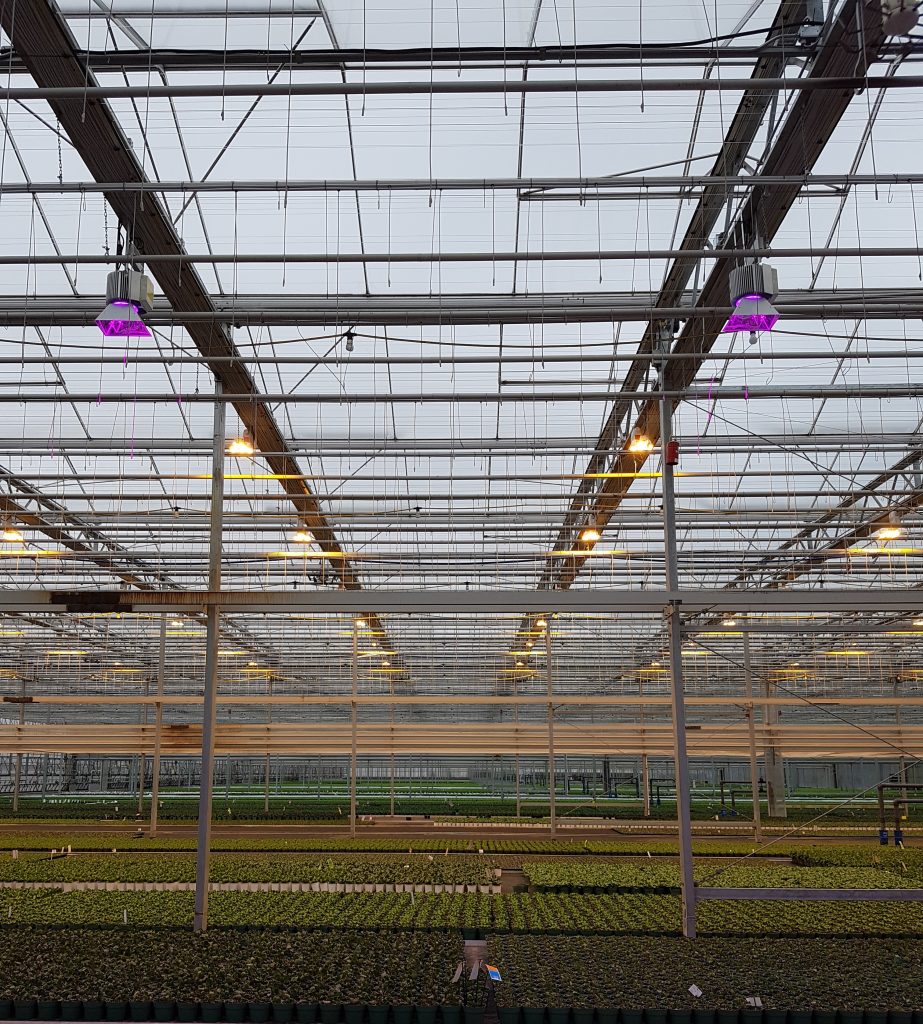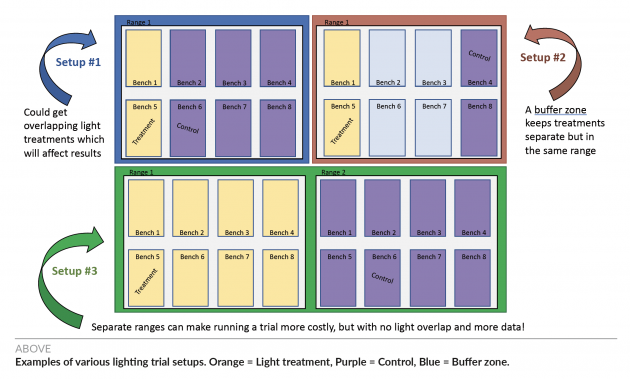
Features
Flowers
Lighting
Tips and tricks for on-farm lighting trials
Looking to try out new lights for your operation? Don’t start before answering these questions.
January 14, 2020 By Dr. Chevonne Dayboll
 Before trialing new lights, it’s important to answer some key questions, such as who’s in charge,
where it should be held and which parameters to measure.
Before trialing new lights, it’s important to answer some key questions, such as who’s in charge,
where it should be held and which parameters to measure. A significant number of research projects in Ontario and elsewhere have focused on understanding how LED lights affect plant growth and development. These studies are important, but the next step is for growers to learn how their own varieties and greenhouse environment will react to the change. The best way to understand if LED is right for your operation is to trial it out on your own farm.
You’ll need to decide on a few important parameters before you start trialing new lights in your own operation. Don’t proceed with an installation without first answering the following questions.
WHERE SHOULD A TRIAL TAKE PLACE?
The trial should be somewhere that is representative of your greenhouse, and where staff can comfortably work to collect data. Don’t put it in the dark back corner of the greenhouse where plants never seem to grow right, just to get it out of the way. Remember that the goal is to see if it can fit into your production system, so make sure it is in an area that you use!
You’ll want to make sure that you have room for a treatment, the LED lights you plan to trial, and a control (what you are doing now). Finding space can be tricky. Consider the options in Figure 1. Having both the treatment and the control in the same range is okay (Setup #1), but it’s best to keep them separated by a few benches so you don’t run into any light overlap (Setup #2). The best option would be to use two similar areas or ranges that are separated (Setup #3), although depending on your greenhouse design, this might not be an option.

WHO WILL RUN THE TRIAL AND COLLECT DATA?
Dedicated staff are the best people to have looking after a trial. Make sure they are interested in the project and aren’t biased towards a certain result. They should have strong attention to detail, be able to take good measurements and notice anything that might be of interest. The ability to “stick with it” is important, since collecting data can be tedious and sometimes boring work!
WHAT KIND OF MEASUREMENTS SHOULD I TAKE?
The types of measures should be something you care about in production. So, if you care about improving the rooting of cuttings, try measuring rooting levels (e.g. how long it takes for roots to emerge from cuttings, reach the edge of the pot, cover 50 per cent of the media, etc.). Some common plant growth measures you might want to think about taking for lighting trials are: rooting time, height, time to flower, number of nodes, internode length, canopy shape or size and dry weight. These measures can be taken during a specific part of a production cycle (e.g. propagation) or over the whole crop cycle, which will require more effort.
You might also want to look at investigating how LED lights change your entire production system and look at metrics beyond plant growth. For example, LED lights don’t generate as much excess heat as HPS, and you may need to compensate for this loss of heat. Tracking the temperature at crop level and your heating inputs might be important for you to make decisions about further investments. Are you interested in knowing how LED lights might affect your biocontrol program? Measuring the number of pests and beneficials caught on sticky cards in each zone throughout the trial can help to get a picture of what might be happening. If you want to know if a certain light spectrum can help to cut down on PGR applications, try measuring the number or volume of applications, hours spent grading a crop, or the size of the plant canopy.
Remember that taking measures doesn’t have to be all numbers. You can take weekly photos of whole plants or plant parts, like blooms, leaves or roots, grown under different treatments, then compare them visually or with a computer program. Just make sure to sample many different plants from across the treatment and control areas.
Ready to start a trial after reading all of this? Don’t be afraid to ask for help! Extension specialists, researchers, consultants and lighting company staff are all good resources that are available to help you establish lighting levels and spectrum, tailor the right equipment to your operation and more.
An earlier version of this article was published on ONfloriculture.wordpress.com.
Chevonne Dayboll, PhD, is the greenhouse floriculture specialist with the Ontario Ministry of Agriculture, Food and Rural Affairs. She can be reached at chevonne.dayboll@ontario.ca.
Print this page